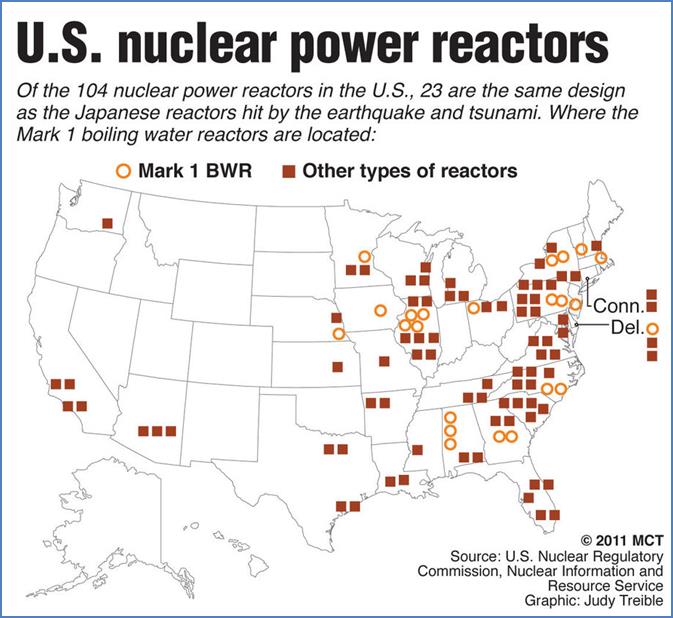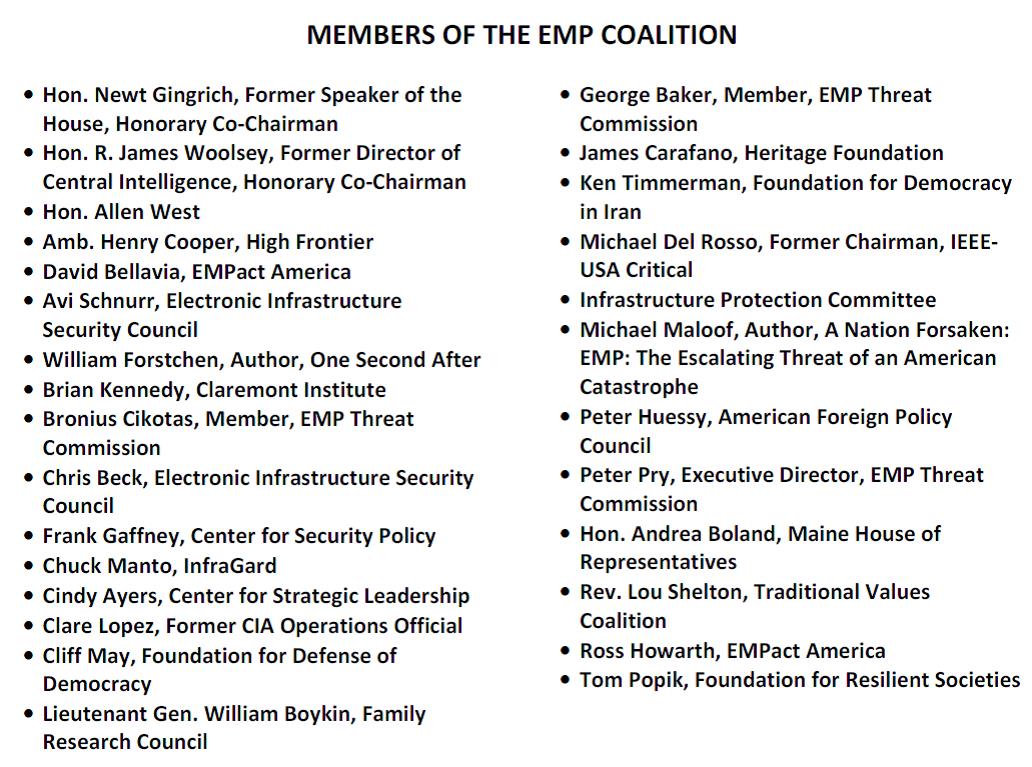Amb. Henry F. Cooper, Chairman . . . Lt. Gen. Daniel Graham, Founder
High Frontier . . Building Truly Effective Defenses . . Reagan’s Vision Lives
E-Mail Message 131028
Lilliputians to the Rescue???
By Ambassador Henry F. Cooper
October 28, 2013
The Washington “powers that be” (in the executive branch and congress) are failing to counter a potential blackout of the nation’s electric power grid, which might be caused by a number of threats—including electromagnetic pulse (EMP). So . . . can “we the people” like the little people of Lilliput in Jonathan Swift’s 18th century satire constrain a “sleeping giant” and somehow compel him to behave more responsibly? Stay tuned . . .
In my last message, which highlighted last night’s National Geographic presentation on the consequences of losing the national electric power grid for ten days, I noted that “the public safety is at the mercy of a dysfunctional collection of Lilliputians with little if any direction or motivation ‘to provide for the common defense’ that at least some are sworn to do. And there is no single federal authority charged with getting this morass organized.”
In referring to Lilliputians, I had in mind dealing with multiple public, private and federal organizations that are failing to rectify the electric power grid’s lack of resilience to a number of threats—and the need for a “Gulliver” to help bring order out of chaos. Jonathan Swift in his satire about 18th century life, Gulliver’s Travels, wrote about the Island of Lilliput and their “little people” with a narrow outlook and focus on relatively small things, while seeking to deal with adversaries and perceived inequities.
As I thought further, I noted that, in their fearful community actions, the Lilliputians tied down an outside “giant,” Gulliver, while he slept and later turned him to support their objectives . . . as I recall the story. If we are Lilliputians, where do we find a “Gulliver” to help us persuade the “powers that be” to protect us against existential threats that could destroy the electric power grid? Could “Gulliver” already be the sleeping powers that be who are not protecting the grid?
In any case, they are a problem to us—especially when we consider existential threats by which we might permanently, not just for ten days as in last night’s presentation, lose the electric power grid, e.g., due to natural or manmade electromagnetic pulse (EMP). And we, the little people, have a growing awareness of problems that threaten our survival and all we hold dear—and that we need to join together to demand better from our leaders.
“We the people”—need I say “little people”— need to overcome the dysfunctional public, private and federal “authorities” who are neglecting their responsibilities. Can we somehow get our sleeping “Gulliver” to help us escape from this stagnation? Or are we left completely to our own devices?
Let me review the nature of the problem, first laid out in our email messages of February 25 and March 4 and then return to this question and specific recommendations.
The Dysfunctional Government Team—A Sleeping Gulliver?
The Congressional EMP Commission, in 2004 and 2008, described in no uncertain terms the reality of both the manmade and natural EMP threat and recommended how to deal with them. But neither the administration nor Congress did anything—and the highly qualified commission disbanded with no apparent net effect.
Since then, a few dedicated members of Congress and private individuals have sought without success to persuade the powers that be to deal with an EMP threat that is well known to our sworn enemies and could lead to the death of several hundred million Americans if not addressed. These efforts have been blocked by a set of bewildering circumstances reminiscent of Abbott and Costello’s comic routine: “Who’s on first?” But nothing is funny about continuing failures of allegedly responsible agents of the public good.
High Frontier has been studying the largely bureaucratic constraints to understand how our institutions and representatives are failing—especially in dealing with the nuclear threat, which can be countered by effective ballistic missile defenses. Consider a few key questions.
Won’t the Department of Defense (DoD) protect Americans from EMP Attack? So sorry.
You might think DoD would lead the charge to protect Americans from EMP effects. Indeed, since we first learned about EMP in 1962 high-altitude nuclear testing in the South Pacific, DoD has spent a lot of money to protect our strategic systems from EMP effects in a conflict in which nuclear weapons might be used. So, the DoD understands what needs to be done and retains the responsibility for maintaining these skills to assure that future strategic systems, but regrettably not the American people, can survive these effects. And if Americans were protected from a manmade EMP attack, they would also be protected from massive solar emissions as well.
DoD could provide “one stop shopping,” if only it would. But protecting Americans and their critical infrastructure from an EMP attack is not considered to be a DoD job—except when it is, and even then DoD is failing.
For example, developing missile defense is a DoD mission, and DoD gives priority to building missile defenses for our overseas troops and allies—not so much for Americans at home. To be sure, DoD has built a limited defense to shoot down a couple of long-range intercontinental ballistic missiles (ICBMs) before they detonate their nuclear warheads a hundred or so miles over the U.S. But if a nuclear-armed short range missile were launched from a vessel off our coasts, our current missile defense plans and programs are deficient, particularly if attacking ballistic missiles are launched from vessels in the Gulf of Mexico, against which we are totally vulnerable. Even terrorists could accomplish such an attack—once they obtain and mate nuclear weapons to even short or medium range ballistic missiles.
In any case, missile defenses won’t protect us against a massive solar emission, which occurs infrequently (on the order of every century or so—and one is overdue). For that we need to protect the electric power grid which is critically important and vulnerable to EMP caused by a massive solar emission (like the 1859 Carrington event). Smaller but still large events can cause major failures of our continentally interconnected electric power grid with its inherent vulnerability to multi-state cascading failures, as discussed in our last email.
DoD does not see fixing this problem as its job—although if the grid were protected from a high-altitude nuclear explosion—as it should be to support vital DoD missions, it also would be protected from a Carrington event.
A decade ago, the EMP Commission used some of its limited funds to pay the DoD to extend its normal activities to document EMP effects pertinent to the survival of the nation’s critical infrastructure. No one was doing this elementary work and no funds were available among the billions appropriated each year for DoD-related activities “beyond its charter.” Actually, DoD was spending relatively little on EMP effects on systems that were clearly within its charter—not sure about now.
Bottom line: DoD gets an F on everything but hardening of a few strategic systems.
So, who is protecting Americans at home? What about the Department of Homeland Security (DHS)? Not much.
Key related Civil Defense measures once within DoD’s charter were passed during the Carter administration to the Federal Emergency Management Agency (FEMA) and most recently to DHS, where FEMA now resides. But DHS has yet even to include EMP in its recommended set of threat scenarios governing its recommended protective measures for the various departments of government (and the states). And DHS has no particular capability for either understanding this threat or its countermeasures—DoD allegedly retains that competence.
DHS presumably is responsible for assuring the viability of our critical infrastructure, which includes the electric power grid. But it is hard to see much real DHS effort on that front. DHS also gets an F.
So, who is next in line for protecting the electric power grid? The Department of Energy (DOE)? Maybe.
DOE’s responsibilities with the electric power grid should extend to concerns about the manmade and natural EMP threats to the grid. Furthermore, since nuclear reactors depend on the electric power grid for cooling, DOE would be concerned about the possible loss of the grid for an extended period—which could lead to major calamities of the sort observed from the earthquake-tsunami effects on the nuclear reactors in Japan two years ago. States that depend on nuclear reactors for their electric power also should be concerned about this possible threat. More below.
DOE and DHS sponsored an important October 2010, Oak Ridge National Laboratory study―Electromagnetic Pulse: Effects on the U.S. Power Grid, which included a series of comprehensive technical reports for the Federal Energy Regulatory Commission (FERC). These reports disclose that the commercial power grids in two large areas of the continental United States are vulnerable to “severe space weather”—read solar activity that can result in a massive earth-directed emission, inducing an EMP that collapses the commercial grids in these vulnerable areas. Excess heat from induced currents in transmission lines would permanently damage approximately 350 extra high voltage transformers.
The U.S. no longer manufactures these transformers, and under normal conditions it would take a year or so to build them in Germany or South Korea, where they are now produced, and to ship them to the U.S. Actually, they might never arrive since our transportation system depends on electricity that may not be available after losing the grid.
At least Energy Secretary Ernest Moniz promised during his confirmation hearing to look into the resilience of the grid to all effects, including EMP. Hopefully, he is working on this important issue, and we look forward to his future reports to congress on his progress.
So, I’d give DOE a C largely because of important contributions from several National Laboratories – – – with prospects for much improvement.
What about the role of the Nuclear Regulatory Commission (NRC)? Maybe serious help.
The ominous consequences of losing cooling water in our nuclear power reactors for lack of electric power could be worse than the March 11, 2011 earthquake/tsunami event that caused a cascading failure in which 3 of the 6 reactors at the Fukushima Power Plant experienced full meltdown. The overall radiation release was carried by the winds to contaminate much of the surrounding region all the way to Tokyo. This Category 7 event on the International Nuclear Event Scale (INES) is the same as that assigned to the 1986 Chernobyl Ukraine event, but the Fukushima event released much less radiation with less fatal consequences.
A consequence of the density of nuclear power plants from the central United States to the eastern seaboard (shown below) is that the loss of cooling water at many of those sites would be far more horrific than Fukushima—well beyond the impact of losing the electric power. Radiation carried by the prevailing and intermittently vary wind patterns could affect the entire country. To check out how you might fare today, click here to see the current wind flow pattern and see what such failures might mean to you and your neighbors.
Hopefully, the NRC is taking these matters into account in evaluating the risks and potential countermeasures that they can assure are employed within their jurisdiction to assure public safety in the event of an EMP event.
The NRC is better prepared technically to deal with the issues than most of the rest of the dysfunctional government organizations, discussed above. If they do their job regarding public safety and the nuclear power industry, then maybe the stodgy bureaucracies in Washington will follow suit and also do theirs regarding the entire electric power grid.
I need more information to give the NRC a grade, but believe they should get a passing grade.
What about Electric Power Regulatory Bodies—FERC, NERC and all that. Not working.
Financial analyses indicate that the grid could be protected to avoid these most undesirable outcomes for an annual cost of a postage stamp-per-subscriber. Regrettably, the Federal Energy Regulatory Commission (FERC), which has validated these concerns with their own studies, doesn’t have the authority to effect changes.
Under current law, the responsibility for electric power grid standard development resides with the North American Electric Reliability Corporation (NERC), an electric industry consortium—which has only studied, and continues only to study, the issue.
The reluctance of the private sector may be traced to a very faulty 2012 study by NERC, which alleges there to be no significant EMP problem. This study is refuted by several authoritative studies, including by the EMP Commission, the National Academy of Sciences, Lloyds of London, and several DOE national laboratories, which contributed to the FERC studies mentioned above. Notably the NERC report counsels a strategy of “further study.” In other words, do nothing.
No wonder some experts consider the NERC to be a lobby for industry to evade government regulation, such as are provided by the Federal Aviation Administration. Some members of the NERC’s own Geomagnetic Disturbance Task Force (GMDTF) have referred to the 2012 NERC report as “junk science.” And so far its strategy and tactics have worked—if delay and confusion were its objectives.
The NERC’s current delaying tactics include conducting yet another exercise, called GridEX, which can add little if anything beyond confusion to understanding that experts have of the grid’s vulnerability and what can be done about it.
__________________________________________________________________
“Delay is the deadliest form of denial.”
C. Northcote Parkinson
Historian and author of Parkinson’s laws, the most notable of which is that
“Work expands to fill the available time.”
__________________________________________________________________
Congressman Trent Franks (R-AZ), chairman of the EMP Caucus recently referred to the NERC as being “extremely unhelpful” . . . a most notable understatement. They get an F from me.
So, can congress be a “Gulliver” and help improve this situation? You’d think so, but there’s definitely a problem to be overcome.
The House Committee on Energy and Commerce has oversight responsibilities for related plans and programs that might reside in DOE—and elsewhere. But during the last Congress, proposed legislation to deal with the vulnerability of the grid to natural and manmade EMP events stalled for 18-months in that committee, presumably due to electric industry concerns that have entered the political milieu—and no doubt connected to the lethargy demonstrated by the NERC mentioned above. This was the second congress that blocked legislation—three years ago, proposed legislation passed the House by a voice vote and was blocked by a single Senator.
So, the bipartisan House EMP Caucus, led by Trent Franks (R-AZ) and Yvette Clark (D-NY) is trying again—and has proposed the Shield Act, which would give greater authority to FERC. Click here for a Shield Act fact sheet.
So, guess what? The proposed Shield Act has been stalled in the House Energy and Commerce Committee.
So, it remains to be seen whether congress will act this time around. Meanwhile the clock is ticking on Mother Nature’s solar emissions—not to mention the manmade nuclear EMP threat as Iran moves steadily toward getting “the bomb.”
And there is little comfort on that front. For example, as a new report observes that Iran may be a month away from a nuclear capability, the head of the U.S. delegation negotiating with Iran calls for a reduction in the existing sanctions on Iran—just the opposite of what is needed. Hopefully, wiser heads will prevail.
What to do???
My overall grade for the government’s dealing with a truly catastrophic existential threat that causes a major failure of the electric power grid is “F” . . .
Whether congress is asleep collectively is debatable—dozing may be a better descriptor. Certainly, congress could direct and fund initiatives to deal with the threat. Some, like the EMP Caucus, are definitely awake and trying to arouse others. But some key powers that be on Capitol Hill and in the executive branch are either asleep or failing to do their obvious duty in making sure that the existential threats are countered.
Frankly, I doubt that the electric power grid will be hardened—or that our missile defense vulnerabilities will be dealt with—until local and state authorities become aware of the threats, understand what can be done to counter them and demand that the powers that be do their jobs, from the bottom up—beginning with us “Lilliputians.”
We should encourage state legislators to follow the pattern of Maine State Representative Andrea Boland (D-Sanford), who successfully advocated in only a six month period historically important landmark legislation, LD 131. It passed the Maine House unanimously and with only two dissenting votes in the Senate.
My colleagues with the Foundation for Resilient Societies are working closely with Andrea to support her efforts in support of the people of Maine. Her successful effort will serve as an important pattern for other state legislators to follow—and they should be of great interest to those concerned at the Federal level, particularly those seeking serious consideration of the Shield Act. If enacted, the result should protect the grid from manmade attacks that can happen and natural EMP events that will occur, the only uncertainty is when.
We have also joined forces with a new EMP Coalition being facilitated by Frank Gaffney, my friend, former Reaganite and President of the Center for Security Policy. The members of the EMP Coalition are listed below.
Click here for a recent very informative discussion led by Frank Gaffney and sponsored by the Center for Security Policy. The panel, convened in support of the above coalition, highlighted three actively engaged men with a great deal of pertinent experience and their discussion is well worth an hour of your time.
- Rep. Trent Franks (R-AZ), who leads the EMP and missile defense caucuses, gave an intense presentation of the nature of the EMP threat and the unfortunately real political resistance for dealing with it—including his difficulty in getting congressional support for the Shield Act.
- Retired Brigadier General Ken Chrosniak, who in his 30-plus year military and civil career has dealt with all aspects of emergency response, explained how our military and civil response teams are completely unprepared to deal with the EMP threat and other contingencies that could lead to loss of the electric power grid.
- Major General Robert B. Newman, former Virginia Adjutant General, retired Air Force officer and homeland security expert, focused on the critically important role of the National Guard in dealing with catastrophes and how today they are not prepared to deal with the loss of the electric power grid in particular.
We will continue to support the EMP Coalition while advising citizens and local authorities of their absolute vulnerability against ballistic missiles launched from the Gulf of Mexico—and what can be done about it if only their representatives do their jobs.
We hope our Florida friends will urge their state legislature to follow Maine’s initiative and also harden their electric power grid, while holding the Washington authorities accountable for their oath to provide for the common defense. We hope they also will seek to build Aegis Ashore missile defense sites to defend against ballistic missiles that might be launched from vessels in the Gulf of Mexico, specifically on Tyndall AFB in the Florida panhandle and on Homestead AFB near the southern tip of the Florida peninsula. Since the same Aegis Ashore systems are being deployed in Romania (by 2015) and Poland (by 2018), no additional research and development money is required—except perhaps to prepare specific sites
The federal government is failing its first duty “to provide for the common defense.” Providing effective missile defenses and hardening the electric power grid as quickly as possible should be a top national priority.
And what can you do?
Join us at High Frontier in seeking to alert the public and our local and state authorities to the existential threats posed by both man-made and natural EMP events—and what can be done about these threats.
We need your help in spreading this information to the grass roots and to encourage all “powers that be” to provide for the common defense as they are sworn to do. Will you do your part?
Lilliputians, unite!
Begin by passing this message to your friends and suggest they visit our webpage, www.highfrontier.org for more information. Also, please encourage your sphere of influence to sign up for our weekly e-newsletter!
Please click here to read Past Weekly Updates!
Please click here to read past Flash Messages!
Please help High Frontier continue this important and timely work!
Be sure to follow us on our Social Sites!
If you found this letter via our Social Sites, and you would like to subscribe, click below!









